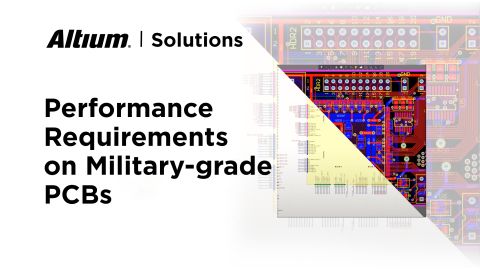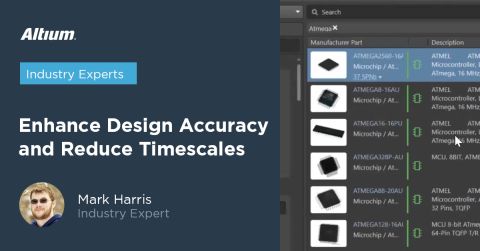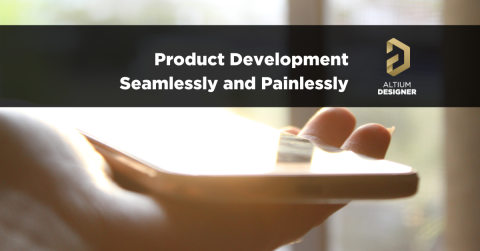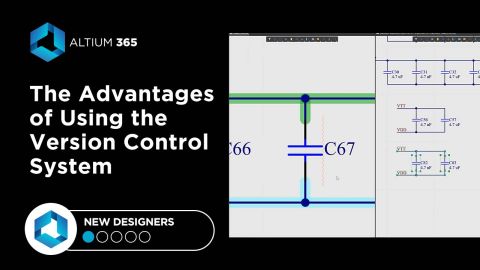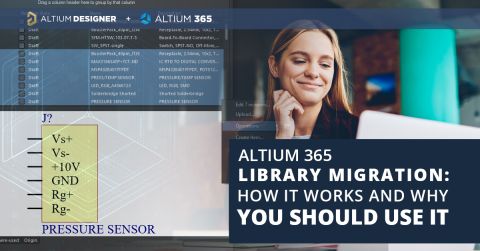Integrating PLM Software with Existing Systems Is Challenging

Digitalization has led to complex manufacturing ecosystems and disparate software applications. This approach is inefficient and prone to human error. product lifecycle management (PLM) software can centralize all product lifecycle data on a digital platform, making it accessible to authorized stakeholders. PLM software, now available as a cloud-based SaaS offering, provides lower entry costs and scalability. However in PCB design, integrating PLM with existing systems can be challenging, especially in the PCB design sector. Companies need to identify obstacles and develop strategies to empower their teams to work around them.
Obstacles:
Data incompatibility: Disparate data formats like proprietary file formats used in legacy systems and industry-standard formats like STEP or JT used by PLM systems can create a communication barrier, leading to errors, time-consuming and labor-intensive conversions, and ultimately, a disjointed workflow.
Migration problems: Uprooting and migrating existing data infrastructure to a new PLM is simple on paper, but it’s a meticulous task. It takes a lot of time, and without exceptional technical expertise, valuable data and information can be easily lost, workflows disrupted, and the learning curve can be a painful one.
Human nature: Unfortunately, humans, through the amygdala (part of the brain), are hardwired to resist change; it interprets change as a threat and releases hormones that make us want to resist. This applies to changes at work, as well. The adoption of new systems takes employees away from familiar tools and workflows, sometimes leading to resistance, which hinders productivity, breeds frustration, and can even lead to security issues if employees look for workarounds.
Empowering Teams:
Standardization: Implementing industry-standard formats like IPC-2581 helps to create a common language that bridges the gap between your PLM software and existing tools, assisting in communication and collaboration, streamlined workflows, and maximizing efficiency.
Phased migration: Attempting data migration in one go is a bit like relocating an entire city overnight. Too much. Companies can, instead, opt for a phased approach that prioritizes critical data and gradually transitions the rest; this is less burdensome on teams involved in the process and minimizes disruption and risk.
Training and transparency: Equip your team with the knowledge and skills they need to deal with new PLM systems. Involve them in the decision-making process, provide ongoing training, and address their concerns when they crop up. Fostering a culture of open communication will help teams buy-in and should help them leverage PLM’s full potential while ensuring a successful transition.
The Intricacies of PLM and ECAD Systems Synchronization
Product lifecycle management and electronic computer-aided design (ECAD) systems serve distinct yet interconnected functions in the design process:
- PLM oversees the entire lifecycle of a product, from conception to disposal.
- ECAD focuses specifically on the electronic design aspect.
While PLM solutions are designed with ECAD—and other—systems in mind, ECAD systems aren’t designed in the same spirit of collaboration. Generally, they are standalone. This imbalance can result in several issues in the design process, including:
- Data loss caused by unmanaged file storage and poor backup measures (no cloud system).
- Difficulty in monitoring design progress across hardware, software, and mechanical teams.
- Poor communication resulting in part-sourcing issues.
- Production delays caused by inaccurate Bill of Materials (BOMs).
To guarantee a seamless flow of data between these systems, companies must synchronize the two meticulously; importantly, they must map out data exchange protocols (e.g., ODBC, XML), establish compatibility standards, and implement robust communication channels. Navigating the technicalities of system compatibility is imperative to prevent disruptions and maintain workflow efficiency.
Product Lifecycle Managers, Electronics Design Engineers, and Quality Assurance in the Age of PLM Integration
Navigating the integration journey requires careful planning and consideration for key roles like product lifecycle managers, electronics design engineers, and quality assurance professionals:
Product Lifecycle Managers
Product Lifecycle Managers play a crucial role in both the integration of PLM systems into a company’s existing infrastructure and the execution of the PLM process, from manufacturing to marketing. Skills that managers must have include:
- a comprehensive understanding of both the technical aspects of PLM systems, including data exchange protocols like API integration or ODBC connections and data mapping techniques.
- an understanding of organizational acumen. Successful product lifecycle managers deal with internal politics, understand budgetary constraints, and balance innovation with practical considerations.
- the ability to champion collaboration. Fostering an environment of collaboration where cross-functional teams work together—rather than in silos—toward a common goal that aligns with broader business objectives. Change management training can help equip product lifecycle managers with the skills to address resistance and encourage team buy-in.
Electronics Design Engineers
For electronic design engineers, the shift in design patterns caused by PLM software integration presents a challenge. For the last half-century, they have been accustomed to focusing solely on design aspects while working within the confines of standalone ECAD tools; the introduction of PLM brings about a broader perspective that emphasizes:
- Embracing collaboration: PLM systems put emphasis on version control, change management, and real-time communication between teams. Engineers must move beyond individual design and actively participate in collaborative design reviews and feedback loops.
- Data management: Engineers must understand how design data is stored, accessed, and managed within the PLM system. They must also be familiar with data governance practices as they are responsible for maintaining data integrity throughout the design process.
- Continuous learning: Upskilling through online courses, training programs, or communities specializing in PLM-integrated design methodologies can help engineers leverage the full potential of the new system.
Quality Assurance
During periods of transition, disruption is guaranteed. But it isn’t always positive. One of the most important considerations for companies is the maintenance of quality, which is necessary to uphold brand reputation and safeguard consumer satisfaction. When it comes to PLM integration, quality assurance goes beyond traditional design validation to encompass broader considerations, including:
- Data integrity: New data management protocols introduce risks like data duplication, inconsistency, or unauthorized access. Implementing data governance practices and automated data validation tools can help guarantee data quality and regulatory compliance.
- Process consistency: Integrating disparate systems can create inconsistencies in quality control procedures. QA teams must actively participate in mapping and standardizing quality checkpoints throughout the product life cycle.
- Traceability: PLM lets stakeholders trace component and material data throughout the supply chain. This data can be leveraged by QA teams to identify and address potential quality issues early in the process, minimizing the risk of rework and production delays.
Overcoming Technical Barriers in PLM Software Integration
There are many hurdles to jump on the PLM software integration journey. Each is capable of hindering progress. But the suggestions given in this article pave the way to success. Cost analysis tends to reveal that while implementation costs vary based on system complexity and data volume, some rising exponentially, when stacking the benefits against the challenges, the scales tip heavily in favor of integration. Improved design processes (50─80% reduction), reduced errors (10─25% reduction), faster time-to-manufacturing (10─50% reduction), and enhanced product quality translate to significant cost savings and a competitive edge in a growing market.
Remember that the key ingredients are planning, collaboration, data standardization, phased migration, and user training. If your company can focus on those elements while empowering relevant stakeholders with the right skills and prioritizing quality assurance throughout the process, it will unlock the numerous benefits of PLM software integration. So, address the hurdles, embrace the struggles, and level up your company’s digital infrastructure.
To elevate your PCB design standards and unlock unparalleled efficiency and innovation, look at Altium Enterprise Solutions, where we bring digital transformation to life with a comprehensive, digitally integrated electronic design solution for enterprises.

